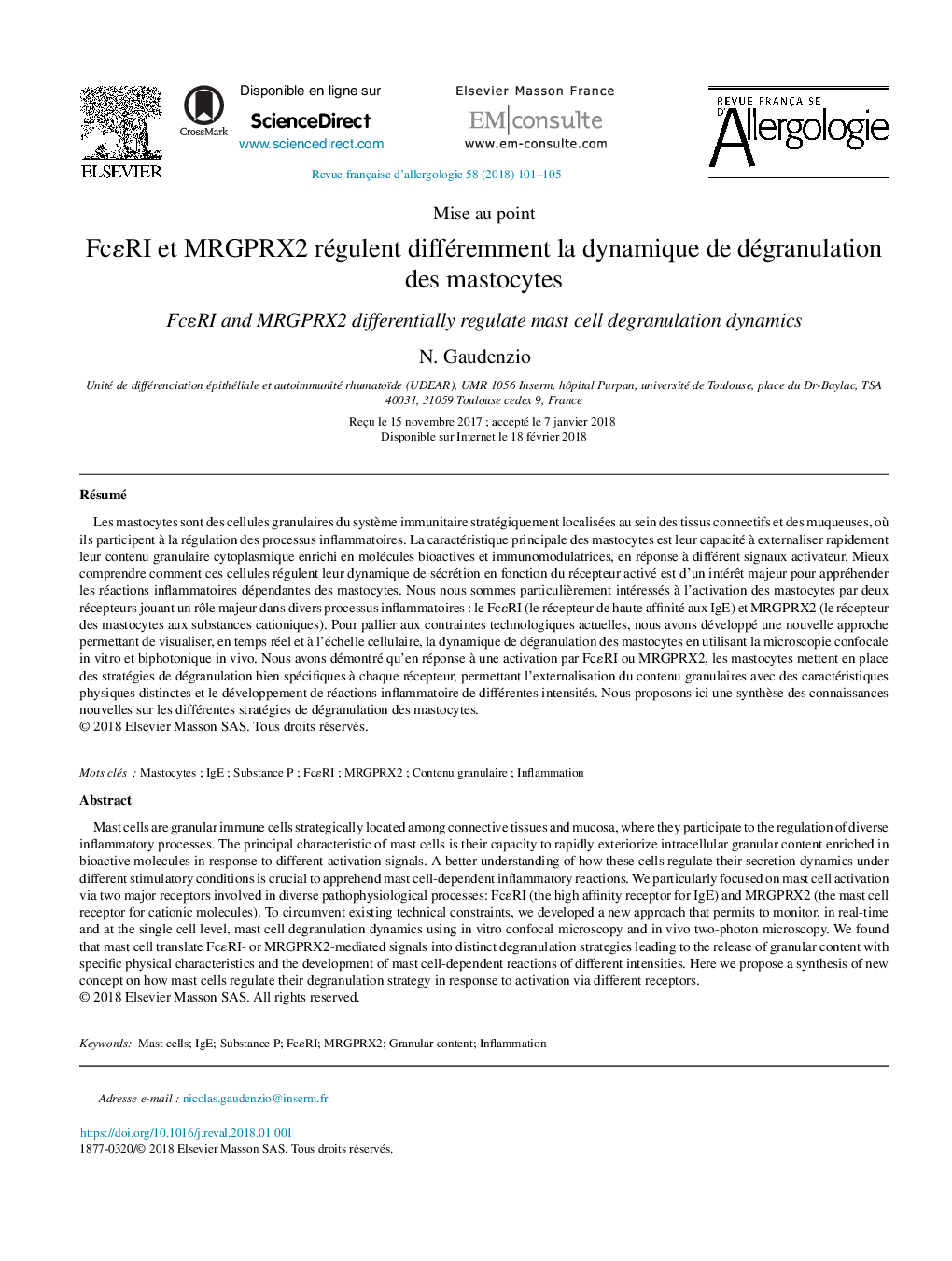| Article ID | Journal | Published Year | Pages | File Type |
|---|---|---|---|---|
| 8743144 | Revue Française d'Allergologie | 2018 | 5 Pages |
Abstract
Mast cells are granular immune cells strategically located among connective tissues and mucosa, where they participate to the regulation of diverse inflammatory processes. The principal characteristic of mast cells is their capacity to rapidly exteriorize intracellular granular content enriched in bioactive molecules in response to different activation signals. A better understanding of how these cells regulate their secretion dynamics under different stimulatory conditions is crucial to apprehend mast cell-dependent inflammatory reactions. We particularly focused on mast cell activation via two major receptors involved in diverse pathophysiological processes: FcÉRI (the high affinity receptor for IgE) and MRGPRX2 (the mast cell receptor for cationic molecules). To circumvent existing technical constraints, we developed a new approach that permits to monitor, in real-time and at the single cell level, mast cell degranulation dynamics using in vitro confocal microscopy and in vivo two-photon microscopy. We found that mast cell translate FcÉRI- or MRGPRX2-mediated signals into distinct degranulation strategies leading to the release of granular content with specific physical characteristics and the development of mast cell-dependent reactions of different intensities. Here we propose a synthesis of new concept on how mast cells regulate their degranulation strategy in response to activation via different receptors.
Related Topics
Health Sciences
Medicine and Dentistry
Immunology, Allergology and Rheumatology
Authors
N. Gaudenzio,
